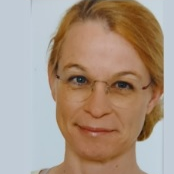High-Tech Metals - Overview, Microstructure, Properties and Recyclability
A special issue of Crystals (ISSN 2073-4352). This special issue belongs to the section "Crystalline Metals and Alloys".
Deadline for manuscript submissions: closed (20 March 2023) | Viewed by 24684
.jpg)
Special Issue Editor
Special Issue Information
Dear Colleagues,
High-tech metals, their alloys, such as In, Ge, Ga, Re and Mg, and rare earth elements are increasingly becoming the focus of today´s applications (telecommunications, automotive and aircraft lightweight construction, light-emitting diodes, power electronics, housings, etc.). Due to the necessary consideration within the framework of a circular economy, their metallurgical production for the various areas of application, their chemical and physical properties (e.g., microstructure, mechanical properties and corrosion properties) and their recyclability (in detail, refurbish, reuse or recycle) must be known, meaning that the refurbishment, reuse or recycling of these materials must already be taken into account when designing novel high-tech ones. It is also important to record the material properties in different databases, allowing for their easier accessibility for use by other scientists, including, for example, the melting and boiling points, melt protection from oxidation, metallurgical melt purification/filtration for primary and secondary materials, casting and mold filling behavior, chemical resistance, tensile and elongation at break, corrosion rates and standard electrode potentials (for both fused salt electrolysis for rare earth elements or magnesium and aqueous electro winning for gallium or indium). Such fundamental data are necessary for the associated metallurgy process, so that the unit operations can also be successfully optimized and adjusted using simulation programs such as CALPHAD, FactSage or Aspen Plus. On the basis that theory and practice belong together, this Special Issue aims to provide both a current overview and concrete examples, deserving topics including papers regarding the investigation of a technological synthesis of MgAlON to be used as a coating material on ceramic foam filters for the filtration of magnesium and other metal melts in future research. I hope this Special Issue supports the impact to and for high-tech metals for now and the future.
Prof. Dr. Christiane Scharf
Guest Editor
Manuscript Submission Information
Manuscripts should be submitted online at www.mdpi.com by registering and logging in to this website. Once you are registered, click here to go to the submission form. Manuscripts can be submitted until the deadline. All submissions that pass pre-check are peer-reviewed. Accepted papers will be published continuously in the journal (as soon as accepted) and will be listed together on the special issue website. Research articles, review articles as well as short communications are invited. For planned papers, a title and short abstract (about 100 words) can be sent to the Editorial Office for announcement on this website.
Submitted manuscripts should not have been published previously, nor be under consideration for publication elsewhere (except conference proceedings papers). All manuscripts are thoroughly refereed through a single-blind peer-review process. A guide for authors and other relevant information for submission of manuscripts is available on the Instructions for Authors page. Crystals is an international peer-reviewed open access monthly journal published by MDPI.
Please visit the Instructions for Authors page before submitting a manuscript. The Article Processing Charge (APC) for publication in this open access journal is 2600 CHF (Swiss Francs). Submitted papers should be well formatted and use good English. Authors may use MDPI's English editing service prior to publication or during author revisions.
Keywords
- high-tech metals
- microstructure
- properties
- material characterization
- winning
- recyclability





